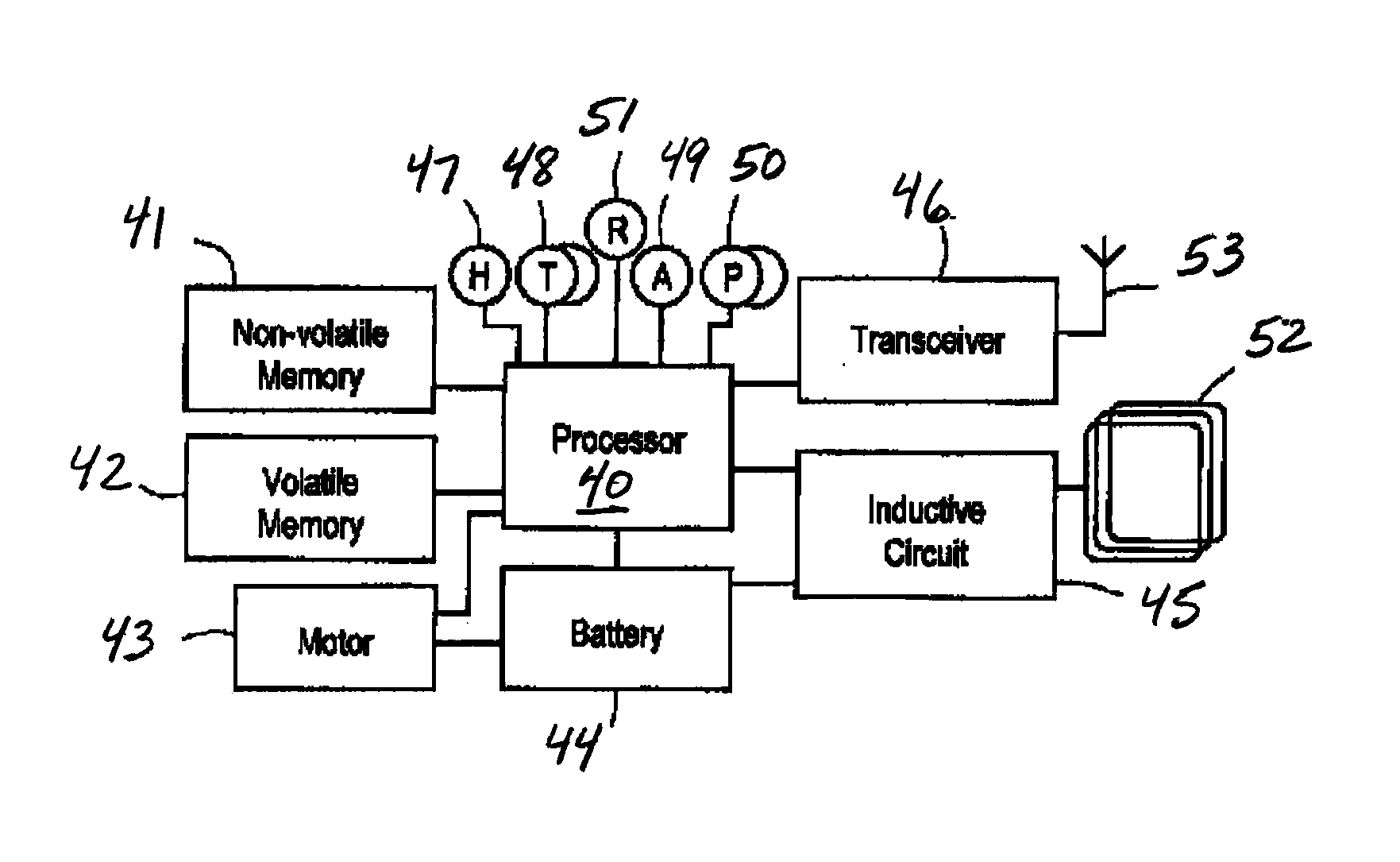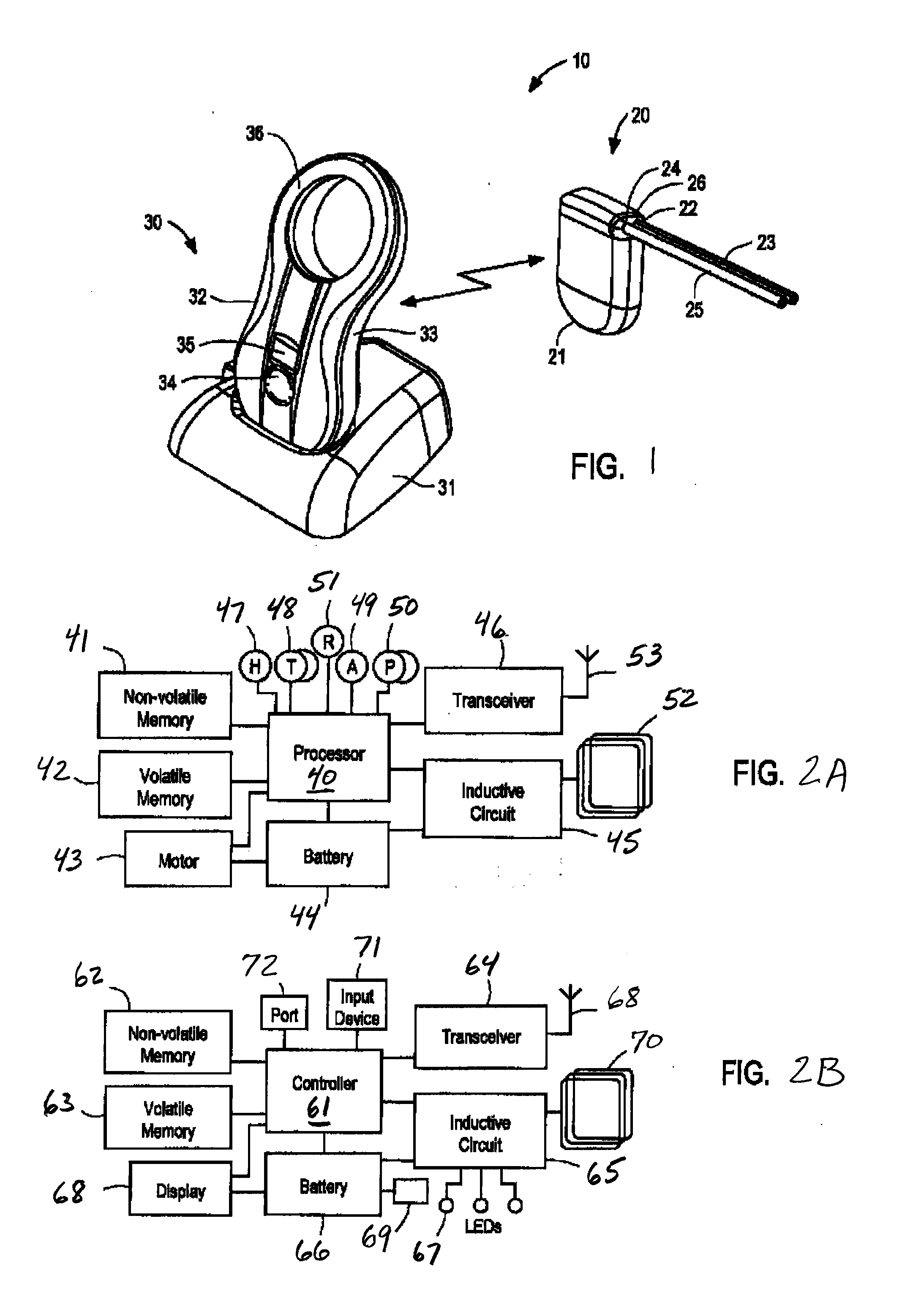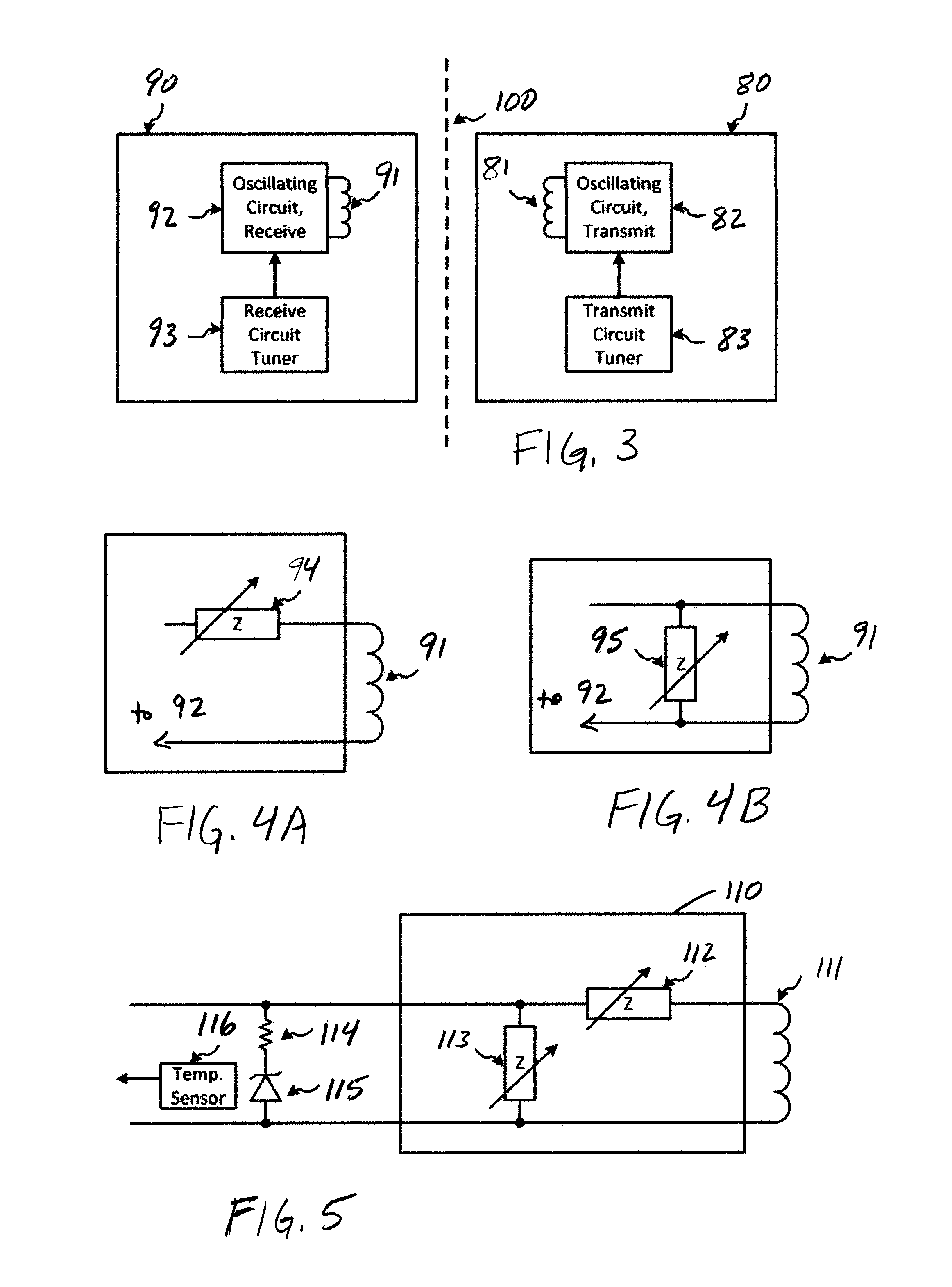Systems and methods for regulating inductive energy transfer to an implantable system
a technology of inductive energy transfer and implantable devices, which is applied in the direction of wound drains, transportation and packaging, and treatment, etc., can solve the problems of increasing wear and tear of mechanical components, deteriorating circuitry, and damage to the electromechanical components and circuitry disposed within the implantable device, so as to reduce the generation of ohmic heating
- Summary
- Abstract
- Description
- Claims
- Application Information
AI Technical Summary
Benefits of technology
Problems solved by technology
Method used
Image
Examples
Embodiment Construction
[0022]Referring to FIGS. 1, 2A and 2B, an exemplary embodiment of a system suitable for use with the inductive charging system of the present invention is described. System 10 is similar to that described in U.S. Patent Application Publication No. US 2012 / 0209165 A1 to Degen et al., assigned to the assignee of the present application, the entirety of which is incorporated herein by reference. System 10 illustratively comprises implantable device 20, and external charging system 30. As described in the incorporated application, system 10 also may include a monitoring and control system (not shown) that communicates with external charging system. As will be understood, implantable device 20 is configured to be implanted subcutaneously within a human body, while external charging system 30 is configured to be periodically placed over the skin in the vicinity of the implantable device to charge and communication with the implantable device.
[0023]Implantable device 20 illustratively comp...
PUM
 Login to View More
Login to View More Abstract
Description
Claims
Application Information
 Login to View More
Login to View More - R&D
- Intellectual Property
- Life Sciences
- Materials
- Tech Scout
- Unparalleled Data Quality
- Higher Quality Content
- 60% Fewer Hallucinations
Browse by: Latest US Patents, China's latest patents, Technical Efficacy Thesaurus, Application Domain, Technology Topic, Popular Technical Reports.
© 2025 PatSnap. All rights reserved.Legal|Privacy policy|Modern Slavery Act Transparency Statement|Sitemap|About US| Contact US: help@patsnap.com



